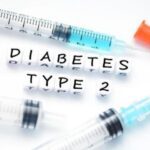Global study reveals over 14% reduction of total body weight in just four months, in over 3,700 patients who used the world’s first ever swallowable gastric balloon
India
healthysoch
New Delhi, November 11, 2022:
A newly published study conducted in 3,716 patients from 26 centers across 9 countries treated with the Allurion swallowable gastric balloon and lifestyle program revealed an average Total Body Weight Loss (TBWL) of 14.1% after just four months. The study is the largest of its kind ever conducted and reports a weight loss that is now recognized as sufficient to put patients into remission of Type 2 diabetes.
The study, presented by Dr. Roberta Ienca at Obesity Week in San Diego, also concluded that the Allurion Program’s unique Virtual Care Suite—a remote patient monitoring system and telehealth platform that enables ongoing support in nutrition, behaviour change, activity and healthy sleep patterns—also contributes to improved outcomes.
The Allurion Program—which consists of the world’s first and only gastric balloon which requires no surgery, no endoscopy,and no anaesthesia alongside a fully supported lifestyle program—was also found to significantly improve metabolic parameters, with a consistent safety profile in a diverse, global population.
This new study provides further evidence to support the broader metabolic benefits of the Allurion Program. A previous study in 226 patients with Type 2 diabetes and prediabetes demonstrated that on average, the Allurion Program brought both diseases into remission
“With an average weight loss of 14% in just four months across nearly 4,000 patients, the Allurion Program has once again been shown to deliver life-changing results across a broad population,” says Dr. Shantanu Gaur, co-founder and CEO of Allurion. “With weight loss of 10-15% now recognized as a driver for diabetes remission, it is clear that the Allurion Program now has a much wider role to play in metabolic health.”
Presented ahead of World Diabetes Day, this study follows a new consensus report published last month by the American Diabetes Association (ADA) and the European Association for the Study of Diabetes (EASD) which recommended the need for a greater emphasis on weight loss as part of a holistic approach to diabetes management.
The consensus report confirmed that a weight loss of 5–15% should be a primary target of management for many people living with Type 2 Diabetes and a higher magnitude of weight loss confers better outcomes. Weight loss of 5–10% confers metabolic improvement and a weight loss of 10–15% or more can have a disease-modifying effect and lead to remission of diabetes
“Obesity and Type 2 Diabetes are pandemics of unprecedented magnitude, and they often afflict patients simultaneously. Often, current treatments for obesity and diabetes are not enough or are refused by patients because of their invasive nature. This study further strengthens the growing evidence that the Allurion Program offers a compelling treatment for both conditions” says Dr. Roberta Ienca of Clinica Nuova Villa Claudia in Rome, Italy.
“The Allurion Program provides patients with an effective tool to reduce haemoglobin A1c (HbA1c) and put both pre-diabetes and Type 2 Diabetes into remission. These results underscore the benefits of the Allurion Program beyond weight loss and highlight how quickly the Allurion Program can have a significant health impact on patients.”
In the Indian context, a similar study was conducted by Mohak Bariatrics, a leading Bariatric and Robotics centre in India. The study consisted of a small cohort of 42 people comprising of 15 men and 27 women, between the ages of 17-61 years, suffering from T2DM and having undergone the Aullrion Program. The results thus far show that between 1 month through to 4 months after balloon insertion 66.7% of patients discontinued all diabetes medications.
36.1% had improved diabetes, and only 2 individuals did not display a clear change in diabetic control. Highest remission occurred between 3- and 4-months post balloon insertion, and 12.5% diabetes remission group has subsequently experienced a recrudescence of diabetes during follow-up. Classification as diabetes improved was based on participant’s status at the time of the follow-up. All patients who used insulin at baseline discontinued insulin usage between 2 and 3 months after balloon insertion.
Losing weight – and good sleep hygiene – are top priorities in the treatment of people living with Type 2 Diabetes
The consensus report also stated that healthy sleep is considered a key lifestyle component in the management of Type 2 Diabetes. Sleep disorders are common in Type 2 Diabetes and cause disturbances in the quantity, quality, and timing of sleep and are associated with an increased risk of obesity and impairments in daytime functioning and glucose metabolism. Additionally, obstructive sleep apnea affects over half of people with Type 2 Diabetes, and its severity is associated with blood glucose levels. However, “catch-up” weekend sleep alone is not enough to reverse the impact of insufficient sleep.
Other priorities in Type 2 Diabetes treatment identified in the report include nutrition therapy, increased physical activity and providing tools to help people living with diabetes develop and maintain healthier behaviours. All these priorities are integrated into the personalized support that is central to the Allurion Program.
“Despite the wide availability of drugs for Type 2 Diabetes, the incidence of metabolic disease continues to rise around the world. By 2045, 783 million people—or 1 in 8 adults—will be living with diabetes worldwide, indicating that current treatment options are not sufficient. This new consensus report, along with the growing research and efficacy of new weight loss technologies like The Allurion Program, bring us one step closer to ending both obesity and diabetes.”






